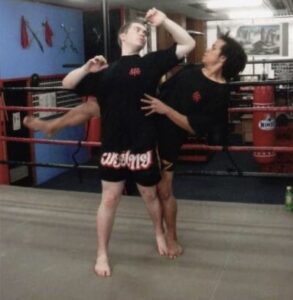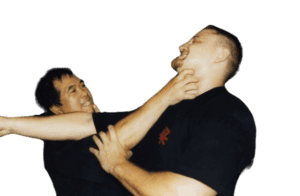Understanding the Striking and Grappling Martial Arts Styles
Striking Martial Arts: Unleashing Powerful Attacks
Striking fighting styles, also known as stand-up or striking arts, are a captivating category of martial arts that focus on delivering potent attacks using various parts of the body, such as fists, elbows, knees, and feet. These styles are characterized by fast-paced movements, precise techniques, and a combination of offensive and defensive maneuvers. They not only provide an effective means of self-defense but also serve as a fantastic way to improve physical fitness and mental discipline. Let’s explore some of the most popular striking fighting styles:
Kickboxing – A Dynamic Fusion of Kicks and Punches
Kickboxing is a high-energy striking style that has gained a worldwide following. It fuses elements of traditional boxing with powerful kicks from various martial arts disciplines. Kickboxers are well-known for their impressive conditioning, speed, agility, and striking accuracy. The training regimen often involves pad work, heavy bag drills, and intense sparring sessions, all aimed at honing the skills of delivering precise and powerful blows. The incorporation of kicks, along with punches, knee strikes, and clinch work, makes kickboxing a dynamic and complete striking martial art.
Muay Thai – The Art of Eight Limbs

Muay Thai, also recognized as the “Art of Eight Limbs,” is a Thai martial art that has left a significant mark on the global stage. Muay Thai practitioners use not only their fists but also their elbows, knees, and shins to deliver devastating strikes. This combat sport is deeply rooted in Thai culture, and its effectiveness is well-documented both in sport and self-defense. Muay Thai fighters develop strong, powerful techniques, alongside unwavering endurance and a warrior’s spirit. In the realm of striking martial arts, Muay Thai stands as one of the most formidable styles.
Karate – The Way of the Empty Hand

Karate, originating in Okinawa, Japan, is a striking martial art that has earned recognition for its precise and powerful techniques. Karatekas (Karate practitioners) emphasize punches, kicks, and strikes delivered with impeccable timing and technique. They strive for perfection in every movement, focusing on developing strong stances, fluid motions, and unwavering mental discipline. The path of Karate is not just about combat proficiency but also about fostering a disciplined mind and a sense of inner peace.
Boxing – The Sweet Science of Fist Fighting

Boxing, often referred to as the “Sweet Science,” is a pure form of striking that utilizes only the fists. Boxers are renowned for their extraordinary footwork, head movement, and precision punching. The objective in boxing is to outmaneuver opponents using agile footwork and to deliver impactful blows with precise technique. Boxing is a sport that demands tremendous cardiovascular endurance and physical fitness, making it a favorite among those seeking a rigorous and efficient workout.
Wing Chun – The Art of Close-Quarters Combat

Now, let’s introduce Wing Chun, a unique and highly efficient striking martial art that deserves a place among these illustrious styles. Originating in southern China, Wing Chun is celebrated for its emphasis on close-quarters combat, lightning-fast strikes, and direct, economical movements. What sets Wing Chun apart is its principle of redirecting an opponent’s energy, rather than meeting force with force. This philosophy, along with the art’s rapid hand techniques and devastating kicks, makes Wing Chun an exceptional choice for self-defense.
Wing Chun practitioners work on developing a strong foundation, honing their sensitivity to an opponent’s movements, and mastering techniques that allow them to strike effectively from various angles and positions. The style is particularly popular among those who value practical self-defense skills and an efficient system that can be applied in real-life situations.
The Art of Control: Exploring Grappling Martial Arts
Grappling martial arts, often referred to as ground fighting or submission grappling, offer a fascinating and highly effective approach to close-range combat. These styles revolve around the mastery of control techniques, focusing on immobilizing, restraining, and ultimately submitting opponents through joint locks, chokes, and positional dominance. In this exploration, we’ll delve into some of the most prominent grappling martial arts, and yes, we’ll include Wing Chun due to its unique aspects related to close-range control and the practice of Chi Sao.
Brazilian Jiu-Jitsu (BJJ) – The Gentle Art

Brazilian Jiu-Jitsu (BJJ) stands out as a highly effective grappling martial art that places a strong emphasis on ground fighting and the application of submission holds. Developed from traditional Jiu-Jitsu, BJJ introduces a unique approach, one that focuses on leverage, technique, and the art of finesse in grappling.
BJJ practitioners, also known as grapplers, learn to navigate ground encounters with remarkable skill. What sets BJJ apart is its ability to level the playing field. Smaller individuals can utilize technique and leverage to overcome larger opponents, rendering BJJ an art of control, rather than brute force.
One of the key principles of BJJ is to remain calm and composed while under pressure. Grapplers train to escape from unfavorable positions and apply joint locks and chokes effectively. The ultimate goal in BJJ is to gain control over an opponent and secure a dominant position. While Brazilian Jiu-Jitsu typically focuses on ground combat, it still retains its effectiveness in close-range control techniques.
Judo – The Gentle Way
Judo, founded in Japan, is another grappling martial art that deserves special recognition. Judo concentrates on throws, takedowns, and submissions, allowing practitioners, known as Judoka, to utilize an opponent’s momentum and strength to their advantage. The term “Judo” itself means “gentle way,” highlighting the art’s focus on using minimal force for maximum efficiency.
Judo is renowned for its standing throws, a method of controlling an opponent through a precisely executed throw. It’s an art that emphasizes technical expertise over sheer power. In Judo, controlling an opponent’s balance and leveraging their movements are the keys to mastering this martial art. This philosophy aligns with the concept of control inherent in grappling martial arts.
Wrestling – Controlling the Mat

Wrestling is a historic and widespread grappling sport that marries elements of throws, takedowns, and pinning techniques. As a martial art, wrestling prioritizes takedowns to gain control over an opponent and pinning them to the ground. The goal is to dominate the mat.
Wrestling is not only practiced as a martial art but also as a competitive sport, with variations found in cultures around the world. Wrestlers, whether on the mat or in the ring, engage in a battle of control. They use their skills to overpower opponents, control their movements, and secure advantageous positions, a cornerstone of grappling martial arts.
Sambo – A Russian Martial Art
Sambo, which originates from Russia, is a unique hybrid martial art. It successfully blends elements of Judo, wrestling, and other grappling styles. What makes Sambo stand out is its versatility; it emphasizes both standing and ground techniques. This comprehensive approach makes Sambo a well-rounded system, suitable for both self-defense and competitive settings.
Sambo practitioners train in throws, takedowns, pins, and submissions, providing them with a broad spectrum of control techniques. Sambo’s adaptability in various scenarios ensures that its practitioners are well-versed in the art of control from close-range grappling to standing maneuvers.
Wing Chun – The Art of Close-Range Control

Now, it’s time to introduce Wing Chun, an intriguing martial art known for its proficiency in close-range control and highly efficient techniques. Wing Chun is characterized by rapid hand strikes, close-quarter combat, and a philosophy rooted in redirecting an opponent’s energy rather than resisting it.
One of the remarkable aspects of Wing Chun that ties it to the realm of grappling is the practice of Chi Sao. Chi Sao, or “sticky hands,” involves two practitioners maintaining constant contact while flowing through various techniques. This exercise enhances sensitivity to an opponent’s movements, allowing for precise control and counterattacks in close quarters.
While Wing Chun is primarily recognized for its striking techniques, the principles of control within close range are evident. Grapplers in Wing Chun are trained to seize and manipulate an opponent’s balance, effectively restraining them and preventing counterattacks.
The Synergy of Striking and Grappling
While striking and grappling fighting styles may appear distinct, many martial artists recognize the value of cross-training in both disciplines. The synergy of striking and grappling allows practitioners to become well-rounded fighters, proficient in various ranges of combat.
For instance, learning striking techniques can enhance footwork, timing, and striking accuracy, which can be invaluable in self-defense situations and striking-based competitions. Similarly, developing grappling skills provides a foundation for effective ground control, submissions, and defensive maneuvers.
Choosing the Right Martial Arts for You
As you embark on your martial arts journey, choosing the right fighting style that aligns with your interests, goals, and physical attributes is crucial. Here are some factors to consider when making your decision:
Personal Goals
What are you looking to achieve through martial arts? Are you interested in self-defense, physical fitness, competition, or personal growth?
Physical Abilities
Consider your natural strengths and limitations. Some styles may be more suitable for individuals with certain body types or athletic abilities.
Training Environment
Assess the availability of reputable schools or academies offering the fighting styles you are interested in. Look for experienced instructors who can guide you on your martial arts journey.
Learning Preferences
Reflect on your preferred learning style. Some people may enjoy the structured forms and katas of traditional martial arts, while others may prefer the dynamic and spontaneous nature of sparring in combat sports.
Conclusion
In the vast world of martial arts, two primary categories emerge: striking martial arts and grappling martial arts. Both offer diverse and effective paths to mastery, presenting unique choices for enthusiasts. As you embark on your martial arts journey, whether it’s through dynamic striking or close-range control, your personal preferences and objectives will guide you in choosing the style that resonates with you.
Striking Martial Arts
Striking martial arts encompass a diverse range of styles, each offering a unique path to mastery. From the dynamic fusion of kicks and punches in kickboxing to the precision and discipline of Karate, and from the elegant simplicity of boxing to the close-quarters combat techniques of Wing Chun, these striking styles present an array of choices for martial arts enthusiasts.
Ultimately, the style you choose depends on your personal preferences, objectives, and the kind of martial arts journey you wish to embark on. Whether you’re drawn to the whirlwind of powerful kicks, the intricacies of fist fighting, or the philosophy of close-quarters combat, each striking martial art has its own magic to offer. The key is to find the one that resonates with you, start your training, and enjoy the physical and mental benefits that come with mastering these remarkable fighting styles.
Grappling Martial Arts
On the other side of the spectrum, grappling martial arts offer diverse and effective paths to control, whether through finesse, leverage, or precise technique. From Brazilian Jiu-Jitsu, where submission holds rule, to Judo’s gentle throws and wrestling’s dominance on the mat, these arts excel in the art of control.
Now, with the introduction of Wing Chun, renowned for its close-range combat and unique practice of Chi Sao, it’s evident that the realm of grappling extends beyond the ground. Wing Chun practitioners master the art of close-range control, adding a distinctive dimension to the world of martial arts.
Ultimately, the choice of a grappling martial art depends on personal preferences, goals, and the martial arts journey you wish to embark on. Whether you are intrigued by the art of submissions, elegant throws, or the philosophy of close-range combat and control, each grappling martial art offers its own unique allure. The key is to find the one that resonates with you, begin your training, and enjoy the physical and mental benefits that come with mastering these incredible styles.

